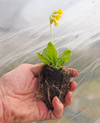This year I've started using 50 count cell flats. I think they will be good for growing certain plants that one would want to grow for a bit before transplanting.
I also like the number count, 50 as opposed to 32 works out nicely for starting multiples of certain plants
Below is a vegetable start. By carefully only planting a few seeds of each, I'll have plenty of seeds for later starts, but I can get a jump on some plants right now.
Below left to right:
Tomato, spinach
Various Kales
Bright Light Chard
Cilantro
Dill
Mizuna and Red leaf Bok Choi
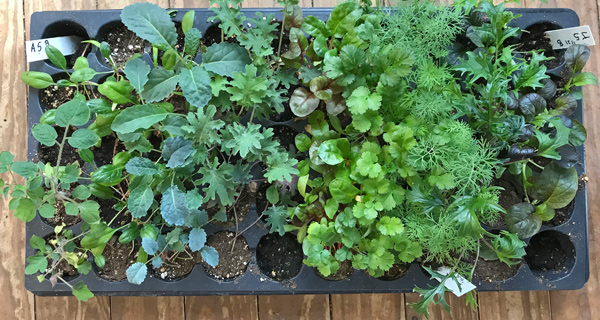

One of the best uses I've found for the 98 cells is testing germination for older seeds. It also allows me to seed in lots of questionable seeds in a small space.
Above you see sporadic germination of pepper seeds. As peppers age they take longer and longer to germinate. This way i can get some plants even if only a few germinate. On the right is a tomato start and various annuals.

These are pepper and basil starts. the peppers are all from 2022, and as such you can see the excellent and quick germination.
The Basil was from last year but still has quite good germination.
Feeding birds in winter is a wonderful experience. There is always so much dynamic action and interaction in these tiny creatures.
I try and buy a premium mix with lots of different food types so as to encourage the greatest variety of birds.


Sometimes the feeder gets quite crowded and there are some smalll minor squabbles.

There are always birds coming and going and they seem to appear in groups, first a flock of Chickadees and then Finches.
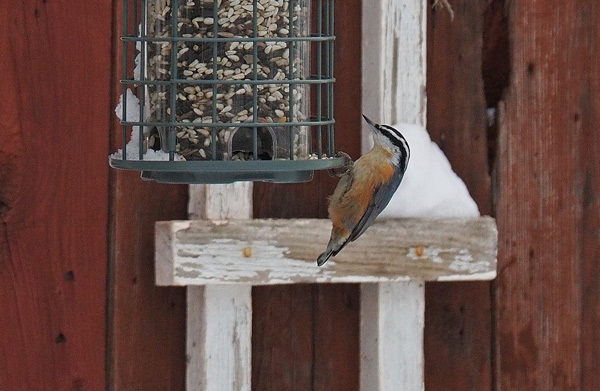
The Red Breasted Nuthatch, my favorite bird. They have such big personalities for such small birds!
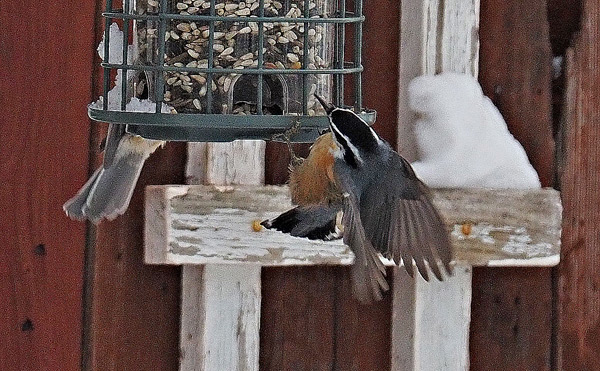

It's amazing to see how birds operate in the air dropping down to fly off!
Massesof vegetable starts ready to go out!

From lower left clockwise: Dill, Broccoli, then center is a variety of Kale types, Naturtiums at 12 o'clock. Golden Runner Bean (Scarlet Runner), more Nasturtiums, Bright Lights Chard, Purple leaf Mizuna then green leaf Mizuna.
While its grey, cold and everything is covered in snow, growing houseplants can help fulfill the need to see green. My plants are growing in my basement and will be moved outside in the summer to decorate my patio. My big discovery this year is that many plants that one considers just annuals, actually overwinter and sometimes even bloom in the winter.
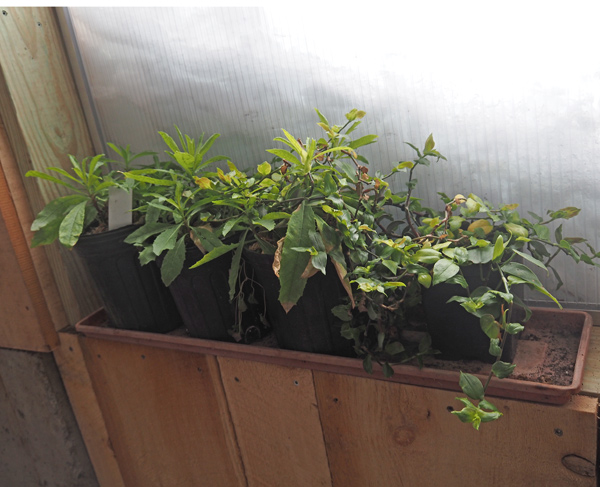
There is only a thin barrier between the warmth of the basement and the snowy outside, but it is enough. The plants on the left
are a species of Lobelia (L. tupa), this is a tender perennial but it should bloom this summer. Watch for updates.

If I squint my eyes, I can almost imagine being in a tropical location. On the right is Oxalis 'Vesuvius' is one of my favorite plants.
It has great foliage color, nice little yellow blooms and it roots very easily from cuttings. The taller plant on the left is a Fuchsia,
It has been blooming off and on for weeks now. It's a tropical shrub, that just gets bigger every year.
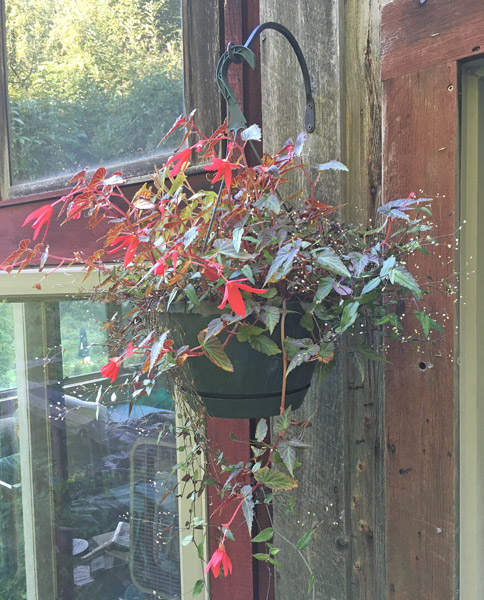
Begonia boliviensis, is another one of my favorite plants. The foliage is a deep red, and it has great red blooms.
Additionally it overwinters inside nicely, if watered it will keep growing, but if you forget to water it, it will go dormant
and start growing again in the spring, as it grows from a corm.

Begonia boliviensis additional benefit is that it is very easy to root from cuttings. It roots easily in water or sand in
a terrarium. The terrarium helps maintain high humidity while the cuttings root.
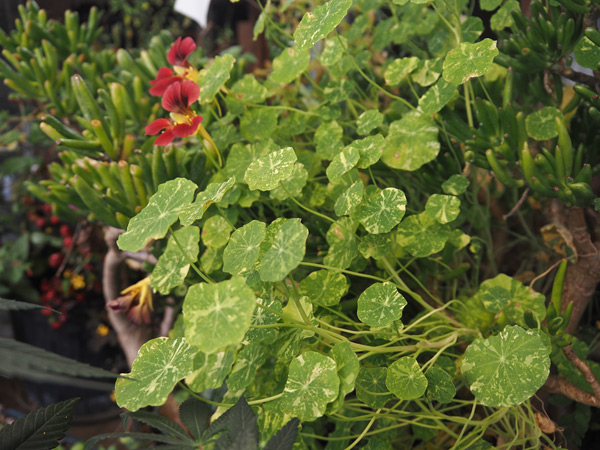
No one thinks of Nasturtium as anything other than a disposable annual, but this variegated Nasturtium (Red Alaska)
Has been growing and blooming in my basement all winter.

Pequin pepper is another surprising annual that makes a nice houseplant. Peppers are actually perennials and there
are pepper plants that are over a decade old growing in Mexico.
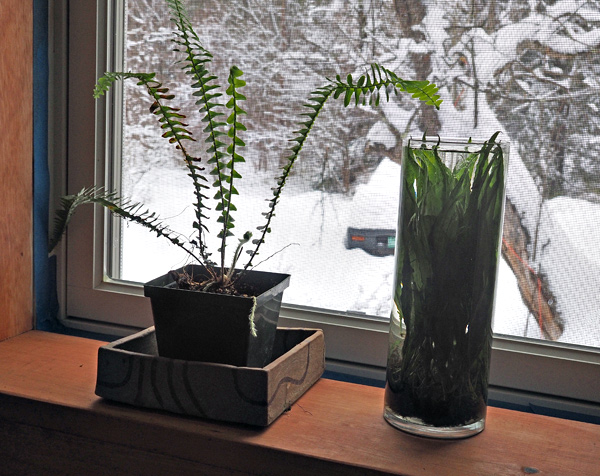
Even a little green on a windowsill helps soften the blow of the cold snowy views beyond. There is a Java Fern,
an aquatic fern growing in the glass cylinder.

Of course feeding the birds is a win-win. Birds are happy and it's great to see the little creatures happily feeding
on their preferred seed.
We always have lots of flats of perennials that we over winter in the greenhouse. The greenhouse is not heated through the winter, but the plastic adds a degree of protection from the extreme cold.




